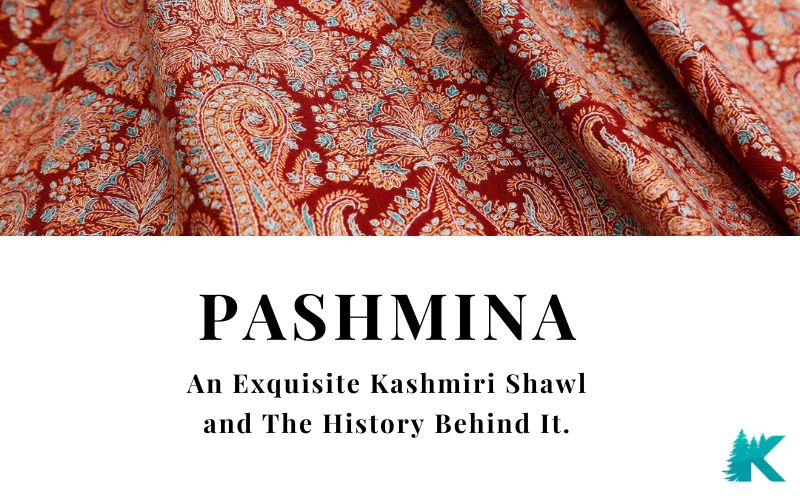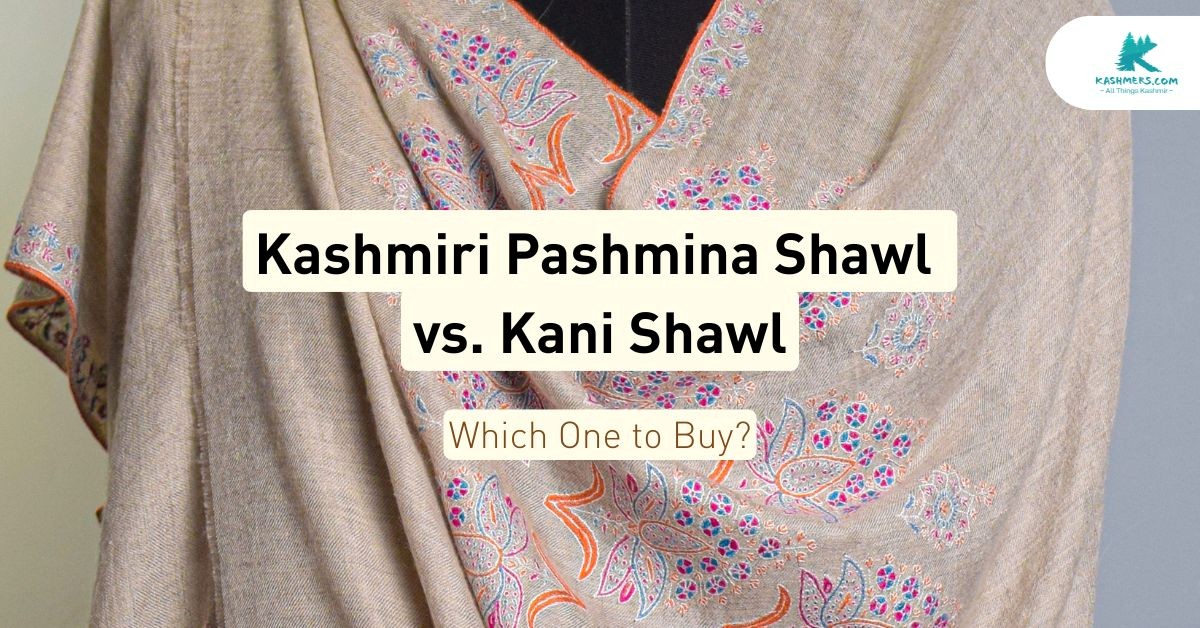Blog
Pashmina: An Exquisite Kashmiri Shawl & The Story Behind It.

Of all the fabrics the world has seen, pashmina mounts as one of the most splendid, exquisite fabrics.
The word Pashmina is derived from the Persian word “pashm” meaning “wool”. The world-famous Kashmiri Pashmina shawls and the art of weaving were brought to Kashmir from Persia by Mir Syed Ali Hamdani. Some of his disciples were artisans who taught this craft to Kashmiri artisans.
“Timeless luxury” is just another word for a pashmina.
You must be wondering if it is just wool,
What Makes Pashmina So Unique?
An exotic species of goat, known as the Changthangi goat, often referred to as the “pashmina goat” or the “ shawl goat” is only found and reared in the northern Changthang region of the Himalaya ranges. The Changthang is a part of the high altitude Tibetan Plateau extending into southeastern Ladakh, India, with vast highlands and giant lakes. The Changthang has an average height of over 4,800 meters and has winters Arctic-like, the temperature dropping to almost -40*C.

The weather conditions at Changthang make it inconvenient for the nomads to practice agriculture, hence they adopted the practice of rearing animals, especially the changthang goats.
These goats survive the coldest winter of the plateau thanks to mother nature who bestowed a thick layer of wool just above their flesh.

As summer comes, this wool suffocates the poor animal and so the nomads trim off their wool by hand, a process known as combing. This process, however, is never done in a hurry. Professionals wait for the perfect time, until the fleece gets loose on its own, and then comb it out.
As winter checks back in, the very warming and comfortable wool grows back onto the bodies of the ‘pashmina goats’
The wool obtained from the undercoat of this breed (the changthang goats) is known as pashmina wool. This wool is then used in the making of the beautiful Kashmiri shawls.
Was Pashmina Always A Popular Fabric?

Love and recognition for the pashmina shawl is not a modern-day thing. It has been owned, worn and praised by the Royal Families, kings, queens, and affluent people from society for centuries now.
Pashmina was a royal symbol and is still known as the king of fibers.
Did you know?
Pashmina shawls were also famous in the courts of roman caesars, which dates even further back in history.
Where did it all begin?
During the 15th century, zain ul Abidin ascended the throne, became the king of Kashmir, and eventually founded the weaving industry in Kashmir and encouraged the weavers to try different techniques and designs. During this period different designs were introduced including floral and geometric designs for embroidery purposes on pashmina shawls.
As the 16th century came, the Mughal empire began to flourish in India and so did the pashmina shawl industry. The Mughal emperors like king Babur and king Akbar admired pashmina for what it was- soft and light, yet warm and beautiful. As the kings themselves gave patronage to pashmina it became a craze in India for the nobility to own a quality pashmina fabric. It simply depicted wealth, prestige and class.
Soon enough, by the 18th century, the pashmina shawls gained worldwide recognition and had completely taken over the French fashion industry and the European market.
In the year 1798, napoleon Bonaparte, a French military and political leader, was stationed in Egypt along with his forces when he came across a light and warm fabric in the desert, completely unaware that it was a pashmina shawl that had traveled all the way from Kashmir to Iran and then finally to Egypt,where it found him.
The emperor found it to be the perfect gift for his wife, Josephine.
Upon receiving the gift, Josephine did not like the shawl and initially thought of it as an “ugly piece” of cloth. But her opinion changed when she wore it for the first time. It is said that Josephine fell so much in love with the ideal look and feel of pashmina that she further bought over 400 shawls, spent over 20,000 gold francs on them, and even had pillows, clothes, and coverlets made from the fabric.
The credit for the popularity of pashmina shawls in Europe, undoubtedly goes to the empress Josephine.
In 1790, for the first time, a pashmina shawl appeared in a French fashion magazine.

Empress Josephine a pashmina embroidered gown.
Now that we know how pashmina took over the world, let’s get back to the basics and learn – How were pashmina shawls made?
The procedure for making world-class pashmina involves sorting raw pashmina, spinning, weaving, and finally embroidering if required.
It is an art that runs down in families, requires a precision that is beyond many, and that is why not everybody is related to this industry.
A point worth knowing here is that shawls used to be fully hand-produced until the 19th century in Kashmir, and it took about 6 -12 months to complete just one shawl. With the boom of industrialization after the 19th century, the production of machine-woven shawls began, which showed a significant increase in the sale of shawls.
Fun Fact?
Pashmina wool was never dyed until the 17th century, as a result, the color of the shawls came out to be exactly as the color of the wool picked- that could be either black, white, brown or grey.

Woman wearing a Sozni embroidered Kashmiri Pashmina Shawl



